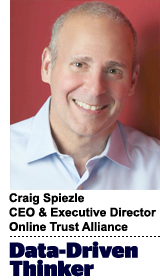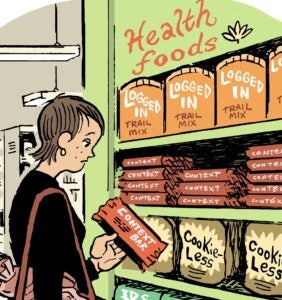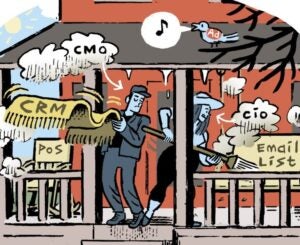 “Data-Driven Thinking” is written by members of the media community and contains fresh ideas on the digital revolution in media.
“Data-Driven Thinking” is written by members of the media community and contains fresh ideas on the digital revolution in media.
Today’s column is written by Craig Spiezle, CEO and executive director at the Online Trust Alliance.
By some accounts, there are more than 200 variants of ad-blocking solutions, many of which utilize whitelisting that allows certain ads through when they adhere to specific rules. While an ad blocker that doesn’t block all ads may sound like an oxymoron, I argue that whitelisting may be critical for the long-term sustainability of ad-supported services.
Whitelisting, as a concept, is not new. For example, antivirus security software uses whitelists of known “safe” applications and allows those to run on computers while blocking everything else. Similarly, today’s email marketers who are worried about their messages being blocked by spam filters can use third-party services to certify that their messages are legitimate and get onto whitelists at major mailbox providers, including AOL, Microsoft, Comcast and Google. By some accounts, inbox placements may increase by 20% or more after a marketer is whitelisted. Leveraging this model supported by senders and ISPs alike, ad blockers are increasingly looking to the promise of whitelisting.
A recent GWI survey said that 36% of global users utilize an ad blocker. Page Fair found that ad blocking has risen 30% worldwide. Clearly, broad use of ad blocking could be destructive. As ads fund the rich content and services we rely on, the impact can be devastating and create a digital divide for those who move to subscription services or trade their personal data in exchange for content.
While most ad blockers allow users to configure their browsers to whitelist individual websites, many consumers are not aware of this capability or take the time to do so. This is where the importance of a default whitelist becomes critical.
To preserve the core revenue engine that drives the web while still protecting consumers against aggressive advertising tactics, three ad blockers – AdBlock, Crystal and Adblock Plus – have adopted a central whitelist to automatically allow (good) ad revenues to flow to content creators and publishers.
The task of defining which characteristics make a “good” ad vs. a “bad” ad needs to be based on objective criteria. One model being discussed is a multistakeholder group ideally made up of publishers, digital rights groups, brand advertisers, security professionals and possibly academics. To succeed, that group needs to be completely independent of any commercial interests, yet be open, objective and pragmatic.
The collective promise is that safer and non-intrusive ads are served and viewed while unacceptable ads are blocked. The result is that whitelisting becomes a market incentive for better and safer ads.
Ad blocking is a wake-up call for the industry, yet we need to understand that ad blockers are not the problem. It is the need that users feel to use them that drives this debate.
However, there is much more to be done to address mounting security and privacy issues related to advertising. Do not be fooled – opting out of interest-based advertising is not the answer as long as the networks continue to collect and share the data.
There is no debate that unilateral ad blocking is bad and that sites should consider blocking users who are doing so. At the same time, for the ad industry to grow and prosper, we need to take a step back and address the core reasons that consumers feel compelled to install ad blockers. Whitelisting is a critical step forward to mutually respect users while supporting and embracing ad-supported content and services.
I do not use an ad blocker today, but if you are using one, make sure that you use one which has a whitelist based on objective criteria. Otherwise, you will miss out on the content and services the web offers.
Follow Online Trust Alliance (@otalliance) and AdExchanger (@adexchanger) on Twitter.













